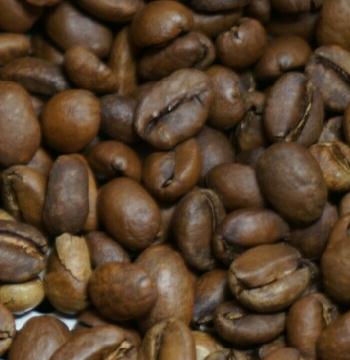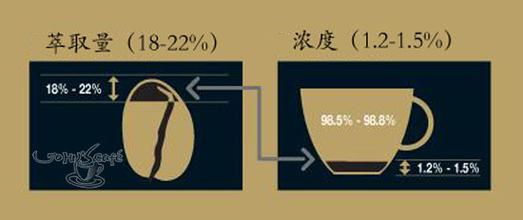Brief introduction of 90 ninety plus to gain an in-depth understanding of the cultural development and knowledge of 90 + coffee beans
Recently, when I talked to a lot of people about 90 beans, I found that many people still don't know the naming, classification and grade of 90.
In retrospect, when I first came into contact with 90, it took me some time to get a general idea of what the name of 90 was all about.
I have to say that from concept to brand management, this is a very special company, but at the same time, it is not easy for ordinary consumers to understand.
If it is not for some knowledge of their products, their official website is completely unable to answer what their products are, how to name them, how to classify them, like a book of heaven.
Joseph Brodsky founded Ninety Plus (90) in 2006, and Joseph began his journey in 2003 and 2004 when Geisha (or Rose Summer) appeared in Panama, but when he didn't find the result he expected in Panama, he had another idea. There may still be some undiscovered varieties among the more than 10, 000 coffee varieties in Ethiopia.
In order to ensure quality, 90 adopts a cooperative model with local manors, from planting, sampling and harvesting to subsequent processing and cup testing.
90's exclusive Profile Processing ensures that each coffee bean has a unique and stable flavor trend and quality, while 90% of the coffee is marketed like fine red wine.
90% of the beans are named in a completely different way from the usual boutique beans.
First of all, unlike the usual names of producing areas and manors, each bean is named according to its flavor, for example, the famous Nekisse is originally intended to be taken from Shakisso's nectar.
The naming of 90 usually starts with the concept of flavor, then the name, and then the choice of producing areas and cooperative farms. It is very different from the general at this point, it is a brand with boutique management style.
It is not difficult to find that usually beans have the letters N, H or W, such as Ethiopian Yiagacheffe G3 N, which is commonly seen in the market, where N stands for Natural. H = Honey (honey treatment) and W = Washed (washing).
Here, 90 also has different views, and they think that beans should be distinguished by flavor trend rather than by treatment.
Generally speaking, each treatment of beans will have a more representative flavor, such as:
Sun: unrestrained fruit aroma
Honey treatment: the sweetness is outstanding.
Washing: the flavor is relatively clean
However, 90 believes that sometimes there will be the same flavor trend under different treatments, for example, the flavor performance of beans in honey may be similar to that of washed beans, so their family has introduced three basic flavor labels of N2, H2 and W2, and the flavor is distinguished by the intensity of fruit aroma and taste:
W2: (Low) low fruit tonality, emphasizing brightness, acidity and floral aroma
H2: (Moderate) moderate fruit tonality, emphasizing sweetness, fruit taste (non-aroma) and tea flavor
N2: (High) strong fruit tonality, emphasizing unrestrained flavor, sweet and sour, jam and dried fruit.
In 2011, in order to improve the stability of raw beans in Panama during the drying stage, Joseph developed a solar drying system inspired by the wood drying chamber and the University of Wisconsin in the United States, and named this exclusive treatment as Solkiln.
(SK).
Of course, the beans after this special treatment are very expensive, and because there is very little room for production.
Finally, 90% of beans also have a scoring system different from the general 100 points, mainly because most of the 90% beans should exceed 90 points on the cup test, and their grades are based on three factors: flavor, cost and output:
Level 7: special flavor, meticulous and impressive
Level 12: besides being impressive, it needs to be topical.
Level 21: a rare Level 7 with a flavor that usually surpasses that of Level 7.
Level 39: Level 12 with low yield has a higher flavor than Level 12.
Level 95: at present, the highest grade, from the dried incense to the entrance has a great change and impressive, the output is very rare (so far I have not seen the real thing, super rare ~)
That's all for a brief introduction.
Source:
The blog of coffee man Lu Xiansen
Important Notice :
前街咖啡 FrontStreet Coffee has moved to new addredd:
FrontStreet Coffee Address: 315,Donghua East Road,GuangZhou
Tel:020 38364473
- Prev

Fully master the skills of hand brewing coffee to understand the principle of drip hand brewing of segmented extraction test
The first test: no photos, draw a picture to show the cup test results: the first two cups set sweet, fruity sour, fermented aroma; the last two cups floral and citrus aroma
- Next

On the causes and Solutions of extraction factors of Coffee beans after roasting
I was going to go directly into the implementation mode, but think about it or pull this article to the front first, so that you may have a general understanding of different brewing methods, and it will be easier to clarify the relationship and cause of formation of different flavors. ~ the extraction of coffee is nothing more than two things: the solubility, the longer the diffusion, the more dissolved molecules, the more complete the diffusion, of course, everyone.
Related
- What is the meaning of lactic acid fermentation with coffee bean treatment?
- How to judge the state of foam by sound?
- How does the latte pull out the unicorn pattern? Come to get for a little trick to improve the flower pull!
- Will flower pulling affect the taste of the latte?
- Do you know the history of coffee?
- The difference between honey treatment and sun washing what is raisin honey treatment?
- What kind of milk can a novice use to make coffee foam to keep the foam longer? The correct method and skills of milking tutorial sharing
- Why do washed coffee beans taste sour? Flavor characteristics of washed Coffee
- Introduction to the skill of how to practice the size and height of water injection around the circle of hand-brewed coffee
- How do beginners practice coffee flower drawing from scratch?

